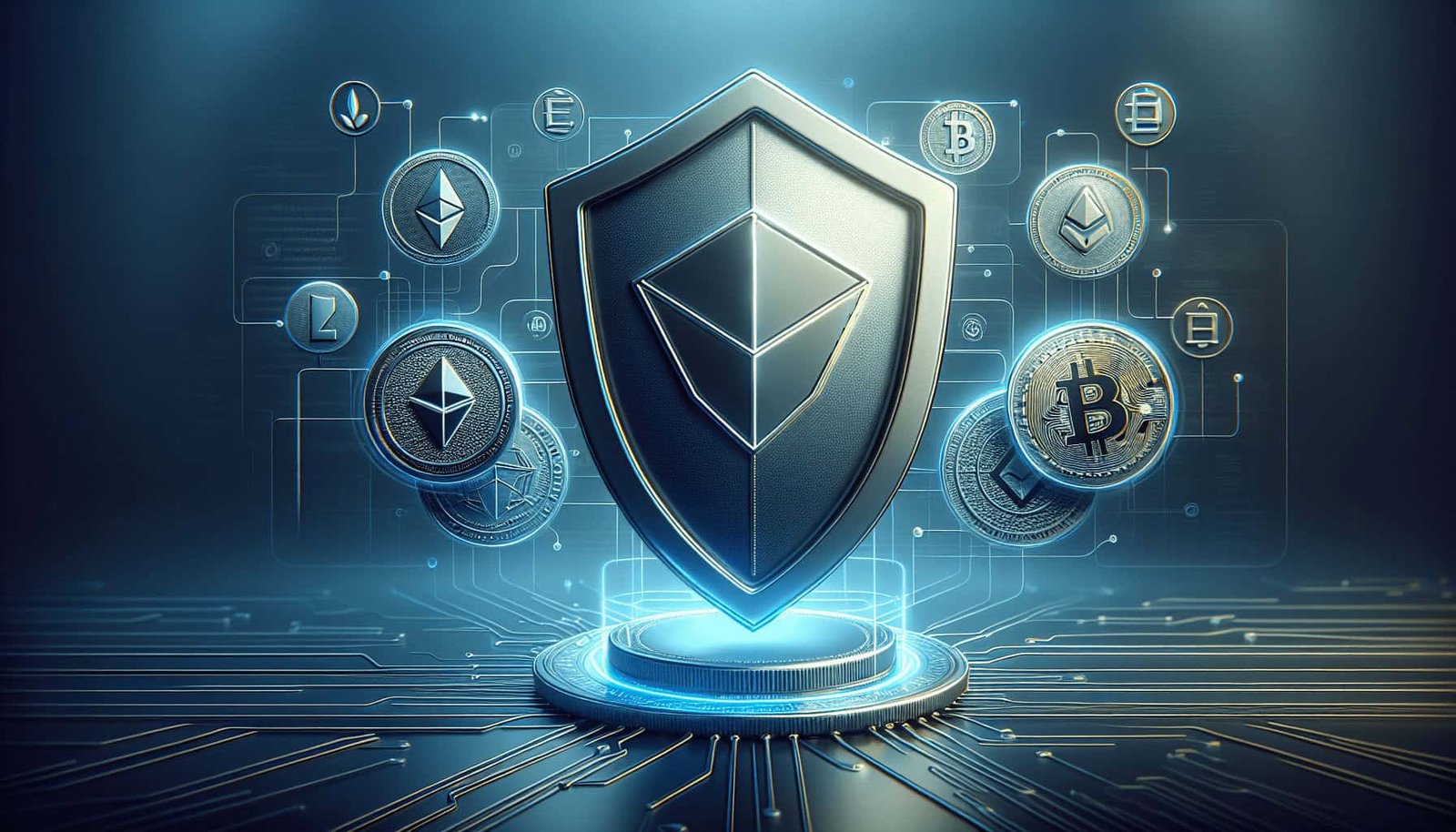Have you ever wondered how to minimize risks when investing in altcoins? If so, you’re not alone. Many investors are drawn to the potential high returns that altcoins—any cryptocurrency other than Bitcoin—can offer. But with great potential comes great risk.
In this article titled “How To Minimize Risks When Investing In Altcoins,” you’ll find comprehensive guidance on how to approach your investments in this exciting yet volatile market. By following these steps, you can make more informed decisions and better protect your investments.

Understanding Altcoins
Altcoins are cryptocurrencies other than Bitcoin. They were introduced with visions of improving Bitcoin’s perceived weaknesses and serve various purposes, from digital payments to powering decentralized applications.
Types of Altcoins
Different types of altcoins exist, and each serves various purposes. Here’s a breakdown to help you understand the diverse world of altcoins:
| Type of Altcoin | Description |
|---|---|
| Payment Coins | These function as digital currencies similar to Bitcoin. Example: Litecoin. |
| Utility Tokens | Used to access services within a specific blockchain ecosystem. Example: Ethereum. |
| Stablecoins | Pegged to traditional assets like the U.S. Dollar to stabilize value. Example: Tether. |
| Security Tokens | Represent ownership in an asset or profit-sharing mechanism. Example: STOs (Security Token Offerings). |
| Governance Tokens | Allow holders to vote on issues related to blockchain governance. Example: MakerDAO. |
By identifying the type of altcoin you’re interested in, you can better understand its potential risks and benefits.
Research: The First Line of Defense
Nothing beats thorough research when it comes to minimizing risk. The more you know, the better decisions you’ll make.
Whitepapers and Roadmaps
Examine the altcoin’s whitepaper and roadmap. The whitepaper should provide a comprehensive overview of the project, including its purpose, technology, and implementation plan. The roadmap outlines future milestones, giving insights into the project’s longevity and seriousness.
Team Behind the Altcoin
Assess the team involved in the project. Investigate their backgrounds, previous work, and credentials. A strong, experienced team usually indicates a more reliable project.
Community and Developers
A vibrant and engaged community can be a positive indicator. Active communities, often found on forums like Reddit and Discord, show the project’s popularity and ongoing interest.
Diversification: Don’t Put All Your Eggs in One Basket
Diversification is a fundamental principle for minimizing risk. By spreading your investments across different altcoins, you mitigate the impact of a poor-performing asset.
Portfolio Allocation
Distribute your investment across various types of altcoins and other cryptocurrencies. For example:
| Altcoin Type | Allocation Percentage |
|---|---|
| Payment Coins | 30% |
| Utility Tokens | 25% |
| Stablecoins | 20% |
| Security Tokens | 15% |
| Governance Tokens | 10% |
This allocation helps broaden your risk and potential reward.
Regularly Rebalance Your Portfolio
Market conditions change frequently. Regularly adjusting your portfolio ensures that it aligns with your investment goals and risk tolerance.
Avoiding FOMO and Emotional Investing
Fear of Missing Out (FOMO) can lead to hasty and poorly considered investment decisions. Emotional investing often results in buying high and selling low—actions that can severely affect your returns.
Establish Entry and Exit Points
Having a clear strategy for when to enter and exit an investment can help you avoid impulsive decisions driven by market hype.
Stick to Your Plan
Following an established plan reduces emotional investing. Stick to your researched strategies and resist the urge to make changes based on fear or greed.

Staying Updated with Market Trends
The cryptocurrency market is dynamic. Staying informed about trends and developments can help you spot potential risks and opportunities.
Follow News Outlets
Follow reputable news outlets that provide reliable and timely information about the cryptocurrency market. Look for platforms that are known for their objective reporting.
Subscribe to Industry Newsletters
Many cryptocurrency experts and firms offer newsletters that provide market analysis, trends, and updates. Subscribing to these can keep you in the loop without having to scour multiple sources.
Utilizing Security Measures
Investing in altcoins involves storing digital assets securely. Poor security can result in the loss of your investment, so taking appropriate measures is crucial.
Use Hardware Wallets
Hardware wallets are physical devices that store your private keys offline, making them less vulnerable to hacks. They are considered one of the most secure ways to store cryptocurrencies.
Enable Two-Factor Authentication
Two-factor authentication adds an extra layer of security to your accounts. Even if someone gains access to your password, they would still need a second form of verification to access your assets.
Be Aware of Phishing Scams
Phishing scams are common in the crypto world. Always double-check the URLs of websites you log into and be cautious of unsolicited emails or messages asking for your private keys or passwords.
Backup Your Wallet
Ensure you have multiple backups of your wallet in different secure locations. This precaution helps you recover your wallet in case of loss or damage.

Legal and Regulatory Compliance
The regulatory landscape for cryptocurrencies is evolving. Understanding and complying with legal requirements can safeguard you from legal repercussions.
Know Your Customer (KYC) and Anti-Money Laundering (AML) Practices
Many exchanges and platforms require KYC and AML compliance. Completing these verifications can protect you from illicit activities and ensure your investments are legally compliant.
Stay Updated on Regulations
Because regulations vary by country and can change, staying updated is essential. Regulatory updates can affect the legal status and potential value of altcoins.
Analyzing Market Cap and Volatility
Market cap and volatility offer insights into an altcoin’s risk level.
Understanding Market Cap
The market cap of an altcoin is calculated by multiplying its price by its circulating supply. High market cap generally indicates stability, while low market cap altcoins are riskier but can offer higher returns.
Assessing Volatility
Volatility measures price fluctuations. Highly volatile altcoins can offer significant gains, but also substantial risks. Understand your risk tolerance before investing in highly volatile assets.

Risk Management Techniques
Implementing risk management techniques can help you safeguard your investment.
Stop-Loss Orders
Stop-loss orders automatically sell your altcoins if their price falls to a certain level. This action helps limit your losses.
Position Sizing
Control the size of your investments. A smaller position can reduce the risk of losing a significant portion of your portfolio if the investment performs poorly.
Dollar-Cost Averaging
Dollar-cost averaging involves investing a fixed amount of money at regular intervals, regardless of the altcoin’s price. This method reduces the impact of volatility and lowers the risk of making poor investment decisions based on short-term market movements.
Choosing the Right Exchange
Selecting a reputable and secure exchange is vital for minimizing risks.
Reputable Exchanges
Opt for well-known exchanges with a track record of good security practices and reliable operations, like Coinbase, Binance, or Kraken.
Comparing Fees and Features
Different exchanges have different fee structures and features. Compare these aspects to find an exchange that fits your needs.
| Exchange | Security Features | Fees | Supported Altcoins |
|---|---|---|---|
| Coinbase | 2FA, Cold Storage | Transaction Fees | Major Altcoins |
| Binance | 2FA, Insurance | Low Fees | Wide Range |
| Kraken | 2FA, Cold Storage | Competitive Fees | Diverse Selection |
Security Measures on Exchanges
Check whether the exchange employs comprehensive security measures like cold storage and two-factor authentication (2FA).

Fundamental and Technical Analysis
Performing both fundamental and technical analysis can guide your investment decisions.
Fundamental Analysis
This involves evaluating an altcoin’s intrinsic value based on various factors like technology, use case, and team.
Technical Analysis
Technical analysis involves studying price charts and market trends to predict future price movements. Common technical indicators include moving averages and Relative Strength Index (RSI).
Keeping an Eye on Regulatory Developments
Regulation is a key aspect of the cryptocurrency market. Changes can impact your investments significantly.
Regional Regulation
Understand the regulatory framework in your region. Different countries have varied approaches to cryptocurrency regulation, affecting how altcoins are traded and taxed.
International Cooperation
Some nations collaborate on global standards for cryptocurrency regulation. Keeping track of these developments can help you anticipate changes and adapt accordingly.
Leveraging Professional Advice
Consulting professionals can offer additional insights and reduce risks.
Financial Advisors Specializing in Cryptocurrency
Some financial advisors specialize in cryptocurrency and can provide tailored advice based on your financial situation and risk tolerance.
Industry Experts and Analysts
Keeping track of opinions and analyses from industry experts can provide valuable perspectives and highlight potential risks and opportunities.
Monitoring and Reviewing Your Investments
Keep a close eye on your investments to ensure they align with your goals.
Regular Performance Check
Regularly review the performance of your investments. This helps you identify trends and make necessary adjustments.
Adjusting Strategies
If your investments don’t perform as expected, be ready to modify your strategies. Market conditions change, and flexibility is crucial for success.
Risk Assessment Tools
Utilize tools designed to assess the risk associated with your portfolio.
Risk Assessment Platforms
Platforms like CoinGecko and CoinMarketCap provide valuable analytics and risk assessments for various altcoins.
Risk Metrics
Familiarize yourself with risk metrics such as Sharpe Ratio, which indicates the risk-adjusted return, and Value at Risk (VaR), which estimates the potential loss over a specific period.
Secure Storage Solutions
Investing in secure storage solutions protects your digital assets.
Cold Storage
Cold storage keeps your altcoins offline, away from potential threats. Hardware wallets and paper wallets are common cold storage methods.
Multi-Signature Wallets
Multi-signature wallets require multiple keys to authorize a transaction, adding an extra layer of security.
Smart Contracts and Insurance
Some platforms use smart contracts and offer insurance to protect your assets. Research such options for additional security.
Tax Implications
Understanding tax implications can save you from legal troubles and financial loss.
Capital Gains Tax
In many jurisdictions, cryptocurrencies are subject to capital gains tax. Keeping accurate records of your transactions is crucial for compliance.
Tax-Loss Harvesting
This strategy involves selling underperforming assets to offset gains and reduce your overall tax liability.
Ethical and Sustainable Investing
Consider the ethical and environmental impact of your investments.
Green Cryptocurrencies
Certain altcoins focus on sustainability and eco-friendly practices. Researching such options can align your investments with your values.
Social Impact Projects
Some projects aim to solve social issues using blockchain technology. Investing in these can provide both financial returns and societal benefits.
Networking and Community Involvement
Connecting with other investors and participating in the community can offer valuable insights.
Joining Online Forums
Platforms like Reddit, Telegram, and Discord have communities dedicated to specific altcoins and general cryptocurrency discussions.
Attending Conferences and Meetups
Participating in conferences and meetups provides opportunities for learning and networking with like-minded individuals and industry experts.
Risk vs. Reward
Understanding the balance between risk and reward can help you make informed decisions.
High-Risk, High-Reward
Investments with higher potential returns generally come with higher risk. Assess your risk tolerance before opting for such investments.
Low-Risk, Low-Reward
Conversely, lower-risk investments usually offer more stable but smaller returns. Balancing high and low-risk investments can provide a more stable portfolio.
Conclusion
Minimizing risks when investing in altcoins involves a multifaceted approach. From thorough research and diversification to utilizing security measures and staying informed about market trends, each step plays a critical role in safeguarding your investment.
Remember, investing in altcoins is not just about chasing high returns. It’s about making informed, strategic decisions to protect and grow your assets over time. By adhering to the guidelines outlined in this article, you can minimize risks and navigate the volatile world of altcoins more confidently. Happy investing!
